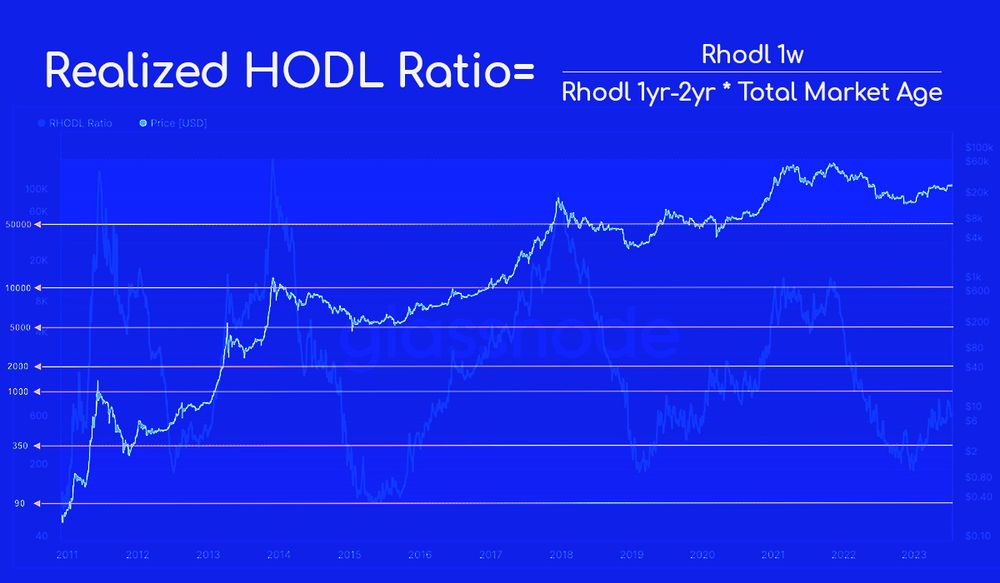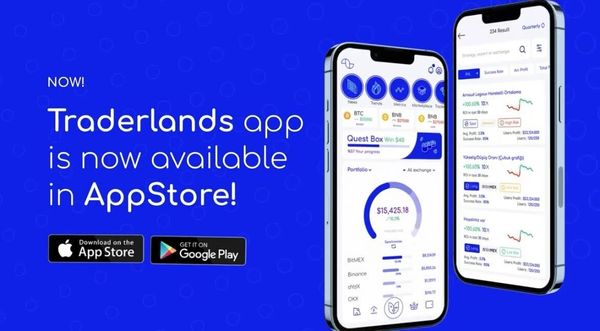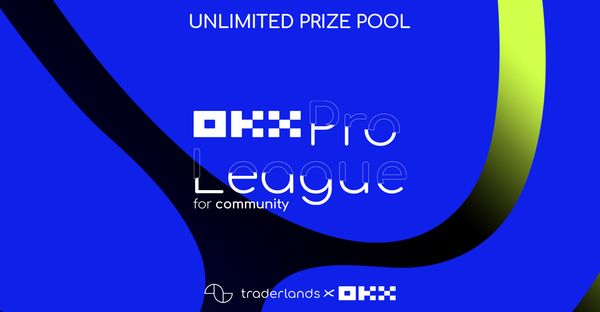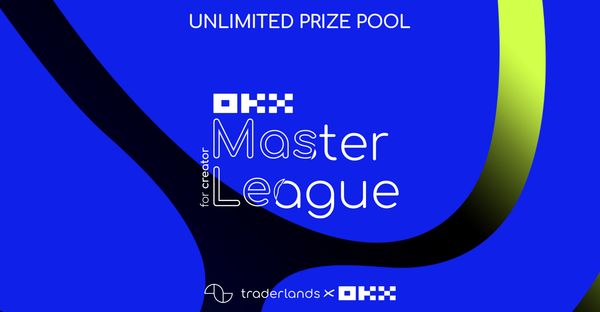Realized HODL Ratio (RHODL Ratio) Indicator
Realized Cap HODL Waves, is a measurement based on holding periods, calculated using blockchain data of crypto assets. It calculates the realized market value of assets by tracking their movement on the blockchain and categorizes this value based on holding periods.
Realized Cap, refers to the realized market value of a crypto asset. Realized market capitalization is calculated by proportioning the market price of an asset according to the holding period. That is, an asset held for a long time will have a higher realized market capitalization, while an asset held for a short time will have a lower realized market capitalization.
HODL Waves is the grouping of retention periods into waves. For example, grouping is done according to specific periods such as 1 day, 1 week, 1 month, and 1 year. Each wave represents a crypto asset with a specific holding period.
Realized Cap HODL Waves is a combination of Realized Cap and HODL Waves. This metric breaks down the realized market capitalization of crypto assets into waves based on their holding period. This allows it to analyze the realized market value of crypto assets with a certain range of holding periods. This provides information about traders' strategies and liquidity.
The RHODL Ratio is designed based on the Realized Cap HODL Waves data. It was developed to accurately determine Bitcoin's lows and highs.
The RHODL Ratio expresses the holding period of a crypto asset in percentage terms. The holding period is the time interval between the date an asset is bought and the date it is sold.
For example, if the RHODL Ratio of a crypto asset is 70%, 70% of those who bought the asset have chosen to hold it and have not yet sold it. This ratio is used to show the crypto asset's propensity to hold and potential selling pressure.
A high RHODL Ratio usually indicates that investors are holding their assets for a long time and are resilient to price drops, while a low RHODL Ratio may indicate short-term trading and potential selling pressure.
The RHODL Ratio filters investor behavior between market peaks and troughs.
When the number of new BTC holders significantly exceeds the number of old BTC holders, the market is at a peak, and vice versa.
How to Calculate?
If the 1-week value of the RHOLD band is significantly higher than the 1-2 year value of the RHODL band, this indicates that the market is overheating and the market will peak.
If the 1-week value of the RHOLD band is significantly lower than the 1-2 year value of the RHODL band, this indicates a market bottom.
Formula:
Realized HODL Ratio (RHODL Ratio) = (1-week RHOLD band / 1-2 year RHODL band) * Market timeframe (in days)
Critical Levels for RHODL Ratio
Critical levels: 90-350, 350-1000, 1000-2000, 2000-5000, 5000-10000, 10000-20000, 20000-50000.
During the Period of Uprising
90-350 levels:
It can be interpreted that most of the supply is in long-term, with strong investors who buy at the bottom.
When historical data is analyzed, it can be observed that the RHODL Ratio moving in this region indicates a very strong buying opportunity for Bitcoin.
Above 350 level:
It can be observed that when the RHODL Ratio breaks out of the bottom zone and persists above this level, it indicates a long bullish period for Bitcoin.
It can be interpreted that new investors are slowly starting to buy.
1000 levels:
This level can be considered an important resistance point. If it is exceeded, it indicates that the 2000 level can be easily reached and that Bitcoin has entered an uptrend.
Once this level is exceeded, the number of new investors starts to increase.
2000 levels:
It is a critical level for the RHODL Ratio.
It worked as a very strong resistance zone, especially in 2020. Breaching this level means that the market is getting hotter and new rises in Bitcoin are coming.
Above the 2000 level can be considered as a rapid increase in the number of new investors.
5000 levels:
At the 5000 level, it can be observed that the number of new investors lost momentum. Maintaining this level means that Bitcoin continues to rise.
10000 levels:
It is a very important level for the RHODL Ratio. It is observed that the number of new investors has increased considerably and the market has started to heat up. When historical data is analyzed, short-term corrections can be seen in the Bitcoin price after these levels.
20000 levels:
It can be observed that the market continues to heat up and the number of new investors is quite high. Breaching this level may signal that the market will rise further.
50000 levels:
The 50000 level is the level at which the market is overheated, the number of new investors is at its highest, and the withdrawal of Smart Money from the market is very likely.
It can be observed that 50000 and above marks the market peak in 2011, 2013, and 2017 with great consistency, and after the loss of the 50000 level, the Bitcoin price started to decline.
During the Downturn
Below the 50000 level:
It is a very important region for the RHODL Ratio. When it falls below this zone, it can be said that the market starts to cool down.
During these periods, it can be observed that the number of new investors in the market is higher than the number of old investors.
When the historical data is analyzed, it is observed that there are big decreases in the Bitcoin price after going below this level.
Below the 20000 level:
It is a level where the market continues to cool and the number of new investors is still high. A fall in the RHODL Ratio below this level could signal a continuation of the decline in the Bitcoin price.
Below the 10000 level:
It is a critical level for the RHODL Ratio. When historical data is analyzed, the decline in Bitcoin price continued after falling below the 10000 level.
Below the 5000 level:
It can be observed that the market continues to cool and the decline in the Bitcoin price continue
Below the 2000 level:
It can be considered one of the important levels for the RHODL Ratio. This level has often been observed to work as a strong support level. A break of this level could deepen the decline in the Bitcoin price.
Below the 1000 level:
Below 1000 could mean that the market continues to cool and Bitcoin's decline begins to deepen.
In 2014 and 2018, a rapid descent below this level was observed.
Below the 350 level:
For the RHODL Ratio, it can be considered a very critical zone where the market cools down. This level can be shown as the level where short-term and beginner investors withdraw from the market, while long-term and experienced investors buy.
When historical data is analyzed, it has been observed that Bitcoin purchases made in this region between 350-90 provide great returns in the long term.
RHODL Ratio Critical Levels
In the Glassnode chart image above, the RHODL Ratio is in the green area. Since these levels are considered well below their value, they can be considered as a buying opportunity.
RHODL Ratio Sample LONG and Sell Points
Using RHODL Ratio on Traderlands
Usage in Traderlands Strategy Creator
You can start creating a strategy by selecting the "RHODL Ratio" indicator from the list of indicators. An example strategy is shown in the image below. You can use the RHODL Ratio indicator in a way that suits you, by creating it in line with your research.
This is how the rules for buying when the RHODL Ratio breaks 350 to the downside and selling with Take Profit and Trailing Stop values can be determined.

Backtest Results
1-year backtest result for BTC pair
You can access the Workshop menu here to create and backtest these strategies yourself.
WARNING: The entry and exit strategies in the images are for educational purposes to explain the indicators. They do not guarantee any profit.
When designing an Algorithmic Trading strategy, multiple indicators are usually linked together to form a set of rules.

#indicator #onchain #rhodl




